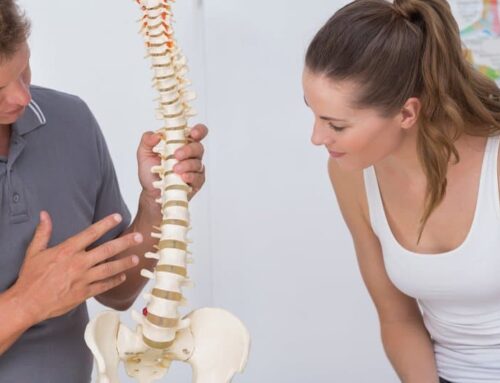A spinal cord stimulator, spinal cord nerve stimulator, or SCS may give you the independence you need.
To some who’ve undergone many surgeries and live day to day with a cocktail of drugs to get by the pain, the development of technology designed to safely deal with it is a life-changer.
Most people would like to do as much as they can on any given day, but the pain stops often them from even attempting to do the basics.
Some pain is more debilitating than others to the point that even standing up takes many minutes and can make the person nauseous.
Interventional procedures, like a spinal cord stimulator, have been successful in diminishing pain. Given that we are all individuals, and our bodies each have their responses to medications or treatments before you get a spinal cord stimulator, you may be prescribed a spinal stim trial to make sure that the effect works for you. If the trial is successful, you are a good candidate to have a spinal cord stimulator for pain relief.
How Does a Spinal Cord Stimulator Work?
The spinal cord stimulator sends low-frequency electrical impulses on multiple muscle groups that mask pain signals received by the brain. A spinal cord stimulator implant is a treatment used to manage pain through thin wires powered by a battery pack.

A spinal cord stimulator allows a patient to send electrical impulses to target areas.
With traditional spinal cord stimulators, the pain is replaced with a tingling sensation called paresthesia. Newer and more advanced nerve stimulator implant focus on stimulation that cannot be felt at all.
What are the Types of Spinal Cord Stimulator Implant?
These are the three main types of spinal cord stimulators.
- Conventional implantable pulse generator (IPG)
- Rechargeable IPG
- Radiofrequency stimulator
The gate control theory has suggested that the spinal cord contains a “gate” that blocks or allows pain signals to be perceived by the brain. Since the advent of this theory, electrotherapy studies in the 1960s have begun evolving to more advanced technology — this time, more tailored to the patient’s individual needs.
Conventional Implantable Pulse Generator (IPG)
The conventional IPG is advised for people with pain in one body part. The lower electrical signal has shown results in managing pain in smaller areas of the body.
Rechargeable IPG
Compared to the conventional or traditional IPG, this type of spinal cord stimulator can be recharged without another surgery. This spinal cord stimulators can target more areas — lower back or one or both legs.
Radiofrequency Stimulator
A radiofrequency stimulator is an older design that is rarely used now because of better technology. This stimulator uses a battery outside the body and targets areas of this stimulator for back pain include the lower back and legs.
As with all three types of SCS, most devices have two to three levels of programs, which can be preset by the licensed therapist or primary healthcare provider.
In any pain management program, exercise and relaxation methods take precedence over other treatments like medications. If you’ve tried everything, it might be time to try a spinal cord stimulator for back pain. These interventional pain treatments are generally used after or along with other methods of managing pain.
What are the Benefits of Spinal Cord Stimulation Therapy?
The spinal cord stimulator has been shown to be effective in many patients.
Studies have shown that spinal cord stimulator help patients significantly through:
- masking uncontrolled pain
- pain relief adjustments
- precise pain targeting
- reducing opioid use
- minimizing invasiveness
- minimizing cost
- aiding in the return of urinary function
- helping improve sexual function
- assurance of reversibility
- promoting independence

Masking Uncontrolled Pain
Whether throbbing or stabbing, pain can lead to appetite changes, fear and anxiety, poor sleeping patterns, and depression. A spinal cord stimulator helps manage uncontrolled or intractable pain, whether acute or chronic.
Some conditions listed below have shown promising positive responses to spinal cord stimulation therapy.
- Reflex sympathetic dystrophy syndrome (RSD)
- Neck pain
- Post-laminectomy syndrome
- Postherpetic neuralgia
Reflex sympathetic dystrophy syndrome (RSD)
One of the most intense pain could be found in people diagnosed with reflex sympathetic dystrophy syndrome (RSD) or Complex Regional Pain Syndrome (CRPS). Like lightly touching the skin, a small stimulus can cause a sudden extreme and lasting pain in people with CRPS.
The pain in CPRS may be treated by therapy, medications, or in combination with other interventions like a nerve block, ganglion stimulation, or spinal cord stimulator. A spinal cord stimulator may be able to mask signals to manage pain better, improving the limbs’ mobility
Neck pain
Sometimes the pain is uncomfortable enough for people to opt for interventions like spinal cord stimulators because of strain, bad posture, disc disease, osteoarthritis, spinal stenosis, or injuries like whiplash. Often times, car accidents can cause damage to muscles, tendons, and ligaments, causing long-lasting pain.
There are some complications of surgeries or illnesses that may cause painful conditions.
One complication resulting from surgery that can cause chronic pain is post-laminectomy syndrome. As a cause of failed back surgery, the syndrome includes a spinal nerve root, which does not fully recover after the surgery. This incomplete recovery causes chronic back or neck pain.
Spinal cord stimulators provide electric stimulation for back pain. In some cases, the source is chemical, making the pain worse.
Another complication of an illness that damages nerve fibers and skin may cause pain. For example, postherpetic neuralgia is a complication of shingles wherein the damaged fibers send exaggerated signals to the brain, causing excruciating pain that can last years.
Pain Relief Adjustments
Pain, at its most basic, is an uncomfortable experience a person feels. A person may feel varying amounts of pain at different times. With most spinal cord stimulators, doctors may preset different settings, allowing for the patient to control the electrical impulses sent. Some spinal cord stimulator models adjust automatically to a person’s movements — sitting, standing, and lying down.
Precise Pain Targeting
With a spinal cord stimulator, electrical impulses are sent to the muscles or nerves, which only need pain relief.
Medications affect the whole body and cause side effects, including sleepiness, constipation, nausea and vomiting, stomach bleeding, difficulty breathing, or heart rate changes.
A spinal cord stimulator does not generally affect other body parts and has limited side effects.

Image source: Shutterstock
Reducing Opioid Use
Opioids, also known as narcotics, can be an effective tool in the grand scheme of things, but they are addictive and must be taken under the supervision of a licensed medical provider. Opioids bind to receptors involved in feelings of pain and pleasure. Pain is diminished, and pleasure is heightened.
As a result, an opioid user tends to seek these feelings more, leading to a higher risk of dependence.
Some side effects of opioids include the conditions below.
- slowed breathing
- drowsiness
- confusion
- nausea
- constipation
For this reason, people who have severe respiratory problems or uncontrolled psychiatric issues are not advised to take opioids.
Taking opioids should be strictly monitored by a licensed healthcare provider. Abrupt stopping of opioids may cause withdrawal symptoms, which include some of the conditions below
- muscle and bone pain
- sleep problems
- diarrhea
- severe cravings
- nausea and vomiting
Minimizing Invasiveness
Most spinal cord stimulator devices require one incision or, in some cases, none at all. For those without an incision, a hollow needle is inserted for placement of the leads with electrodes.
Minimally invasive procedures, such as the spinal cord stimulator, are sometimes preferred over major surgeries because there is less trauma to the muscles, nerves, and tissues, less bleeding, and less scarring. These procedures also have faster recovery times and have better cosmetic results.
Trained physicians often place the latest devices in interventional pain management under X-ray or ultrasound guidance.
Minimizing Cost
A minimally invasive procedure like spinal cord stimulators may minimize the need for hospital and pharmacy visits, saving time and costs. For someone in chronic pain, a spinal cord stimulator implant is often a favorable choice.
Going to the pharmacy for regular monthly refills or hospital visits while experiencing a tremendous amount of pain is an unwelcome effort.
Since a spinal cord stimulator targets specific parts of the body, the side effects and adverse effects are kept at a minimum too. This situation is not true with oral medications, especially opioids.
Oral medications pass through the kidneys. With prolonged use of NSAIDs like aspirin, naproxen, or ibuprofen, especially in people with decreased kidney function, kidneys can become damaged, which can lead to additional treatments and costs.
The liver is another organ that is also prone to damage when overwhelmed by pain medications like acetaminophen. Doctors usually prescribe acetaminophen with a narcotic for uncontrolled pain.

Aiding in the Return of Urinary Function
The spinal cord has spinal nerves that regulate bladder and bowel function. With a spinal cord injury, signals traveling between the nerves that control bladder and bowel function may be affected, causing incontinence.
In a study with spinal cord injury patients, using spinal cord stimulators or nerve stimulation implants have shown an increase in bladder function. With years of use, the user was no longer reliant on the nerve stimulator.
Helping Improve Sexual Function
Nerves that are connected with the spinal cord makes a person feel sensations. The sexual organs in the body are of course rife with sensations.
Since the spinal cord regulates many nerve functions, a spinal cord stimulator can improve sexual function, including getting and maintaining erections and achieving orgasm.
Another study includes the return of the ability to experience orgasm in one woman with a five-year spinal cord injury.
Assurance of Reversibility
The spinal cord stimulator is not a permanent implant. The spinal cord stimulator can be either turned off or removed surgically.

Promoting Independence
The basic activities of daily living or ADLs are taken for granted by most people. From an early age, very young children have been taught to eat, bathe, dress, and become mobile by themselves.
For those who have difficulty in mobility because of debilitating pain, moving or walking with no hesitation or pain symptoms is a euphoric experience.
With less pain, a person will gradually be able to do more. You’d be surprised that with continued treatment, you may find yourself doing previous activities that brought you joy before, whether it’s walking at the park, sewing, or even riding a bicycle.
Don’t expect that you’d suddenly be doing parkour or lifting heavy weights with this freeing experience. You just feel less pain. There are still restrictions on movement as the spinal cord is always the same.
When people become independent, feelings of frustration and worthlessness start to vanish. A person who can do things on their own will see themselves as someone with value, lessening feelings of depression, and anxiety.
You can see this change with people who have started responding to spinal cord stimulators. With less pain, some people can now perform light chores around the house. As a result, people who have had success with spinal cord stimulators often become more motivated and lead more satisfying lives.
What is the Success Rate of Spinal Cord Stimulation Surgery?
Before the spinal cord stimulator is surgically implanted, a trial is done first. A trial is successful when spinal cord stimulation can reduce pain sensation by at least 50 percent.
Results do vary over time. Compared to medical management, a spinal cord stimulator is shown to still be effective after five years. Around 55 percent of patients with spinal cord stimulators reported treatment success.
Even a small amount of pain removed may still work wonders if the patient can now perform more activities of daily living.
Who Qualifies for a Spinal Cord Nerve Stimulator?
Determining if a patient qualifies depends on how they satisfy the criteria. A client-centered team carefully assesses patients who are likely to experience therapeutic success.
Some of the conditions below recommended for spinal cord stimulator treatments are uncontrolled pain on the trunk, limb/s, or other body parts.
- Postlaminectomy Pain Syndrome
- Failed Back Syndrome (FBS) or low back syndrome or failed back
- Radicular Pain Syndrome or radiculopathies
- Peripheral Causalgia
- Epidural Fibrosis
- Multiple back operations
- Degenerative Disk Disease (DDD)
- Reflex Sympathetic Dystrophy (RSD)
- Arachnoiditis or lumbar adhesive arachnoiditis
The listed criteria below are for choosing patients who may benefit from SCS.

How Long is Recovery After Spinal Cord Stimulator Surgery?
Inserting an SCS under the skin is like test-driving a car. The driver should first take it slow. In the first two weeks after the procedure, some activities listed below are restricted.

In around six to eight weeks after the procedure, most patients will return to normal activity.
You should monitor your implant site and call your doctor if you have pain around the implant for longer than two weeks and notice a lot of redness around the wound areas.
Do not scrub or apply ointments, lotions, or creams to the incision sites. To drastically minimize pain, plan to make lifestyle changes like dealing with stress better or meditating.
What Can’t You Do with a Nerve Stimulation Implant?
First, you should let your primary healthcare provider clear you for activities that involve soaking in water and driving. As a general precaution, a person with a spinal cord stimulator can’t drive. Do not take a tub bath, go swimming, or use a Jacuzzi.
Who Can You Talk to About Spinal Cord Stimulators?
You still have the same old spinal cord with a spinal cord stimulator. You can only manage pain better. Don’t lift things, bend too much, or do activities that are challenging to your spine.
Years of chronic pain is debilitating. Not being able to experience the things that one enjoyed before can put a big dent in one’s feelings of worth and self-esteem. You don’t have to live with your pain.
As the local leading interventional pain management healthcare provider, we will provide you the best options. Whether you are in Mississippi or Tennessee, MidSouth Pain Treatment Center is a reliable place to get your long-term pain relief
Your life can be better without pain.
Find out how you can get pain relief through a spinal cord stimulator. For more information, contact us today at (866) 739-2119 to make an appointment with our team for the best level of pain management care available.





